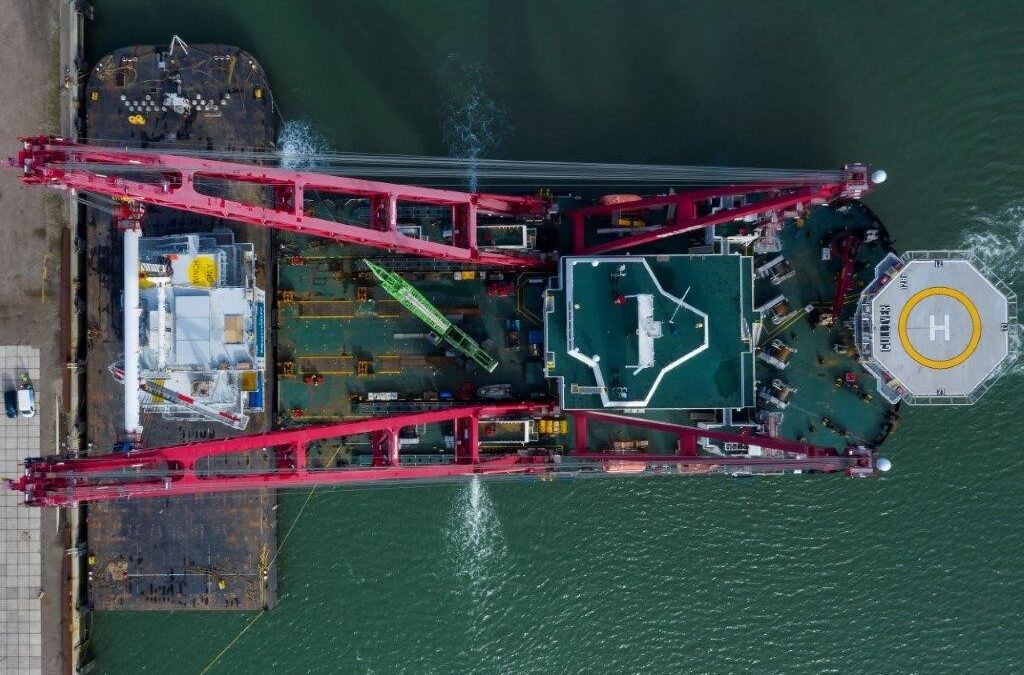Scaldis has used a new and lean, in-house developed transportation concept for the installation of two substations for the SeaMade offshore wind farm in Belgium. According to Scaldis, the method eliminates the need for mooring, an offshore barge and tugs, shaving both cost and time off the installation process.
Scaldis was contracted by DEME Offshore to transport two substations for the 487 megawatts SeaMade offshore wind farm, each weighing 1200 tonnes. Drawing on the experience of six previously installed topsides in the Belgian North Sea, the company developed a new method which moves 75 per cent of the activities to a sheltered location. In this particular case, that sheltered location was the port of Vlissingen, which is part of North Sea Port.
Crane vessel Gulliver
The company used its crane vessel HLV Gulliver to pick up the topsides one-by-one in Vlissingen where they were seafastened on deck while remaining partially suspended in the vessel’s main cranes. The load was maintained during the transport to the offshore wind farm eliminating the need for an offshore barge and tugs to assist in the installation process.
With the load hanging in the main cranes, the HLV Gulliver approached the monopiles for the substations slowly, using its DP 2 Mode for the last 100 metres, and then lowered the substation onto the foundation. According to Scaldis, it installed the substations in record time, but the company did not specify how fast the substations were placed into their positions exactly.
‘With this new concept, we were able to move 75 per cent of all activities to a sheltered location, increasing the speed of the operation and the safety of the project. We are positive that we will use this method more often for future installation and decommissioning projects,’ the company states.
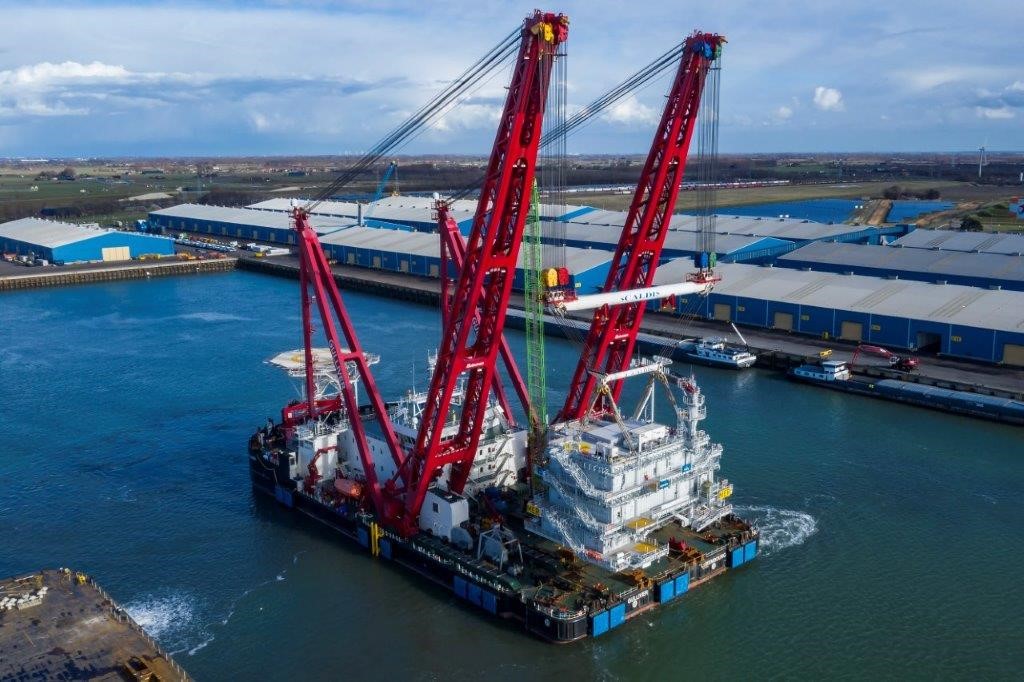
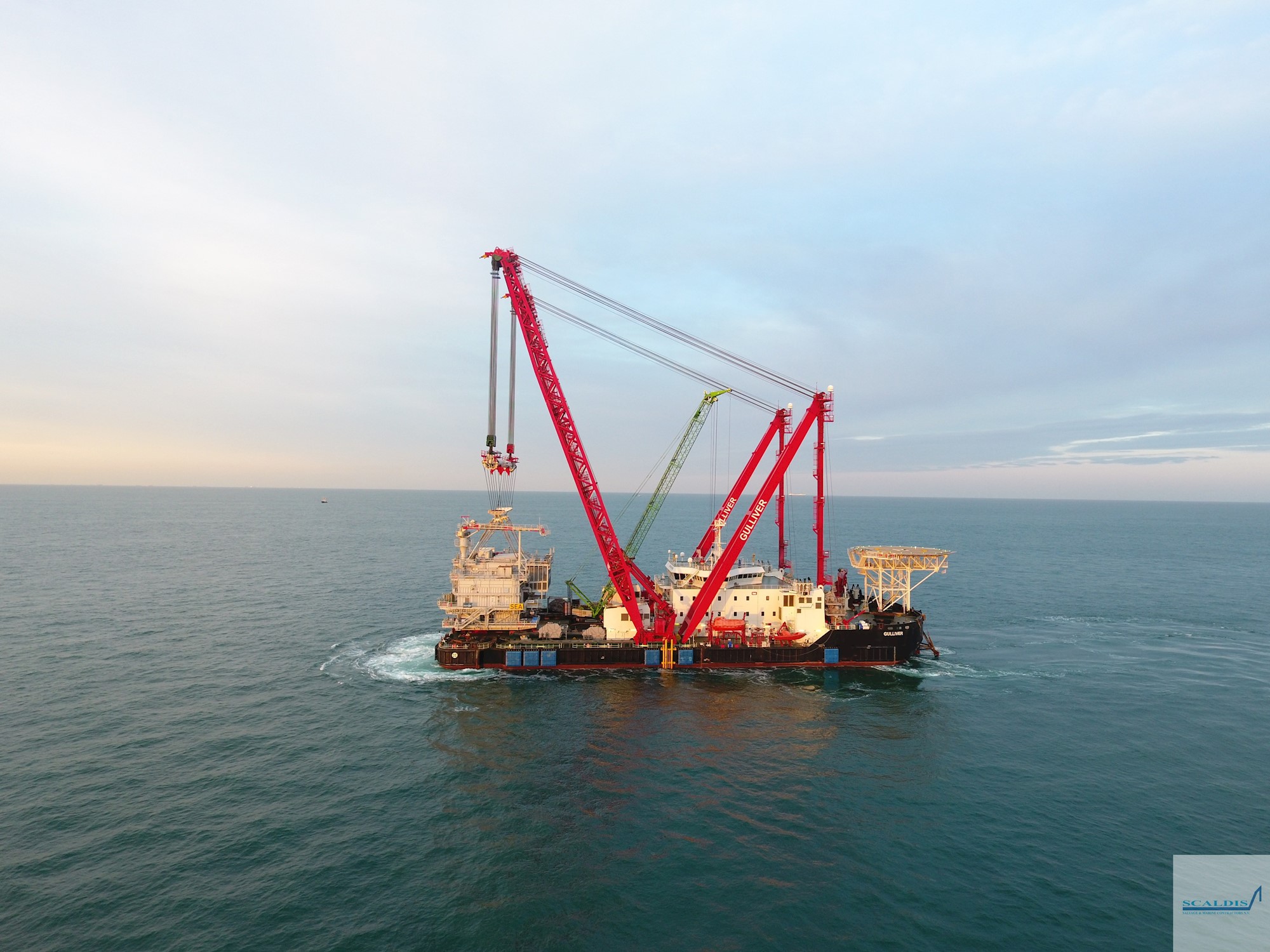
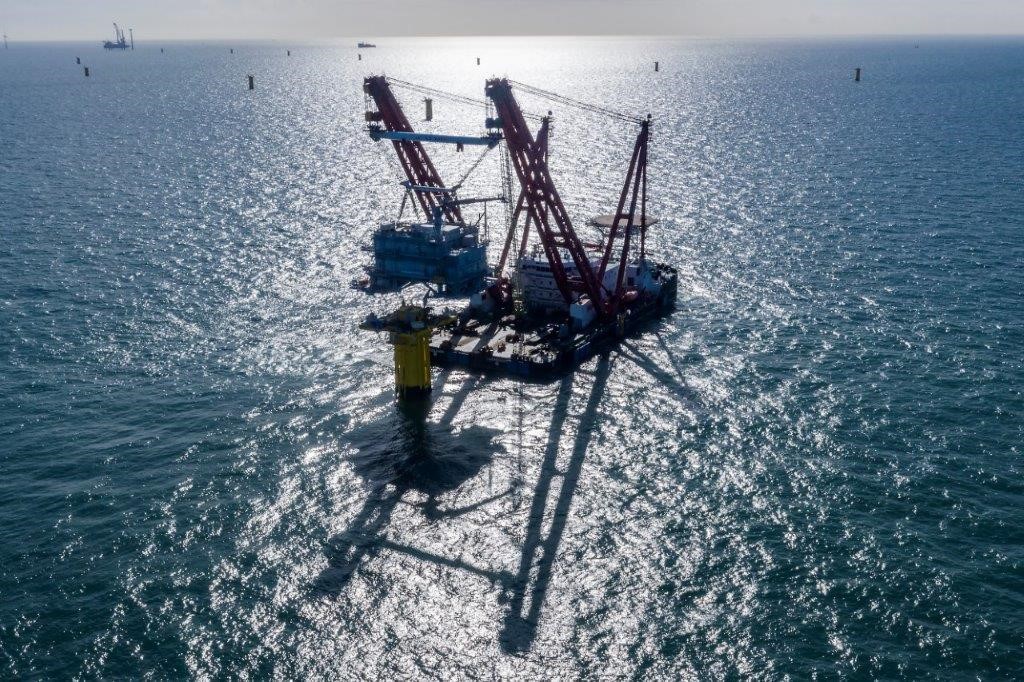
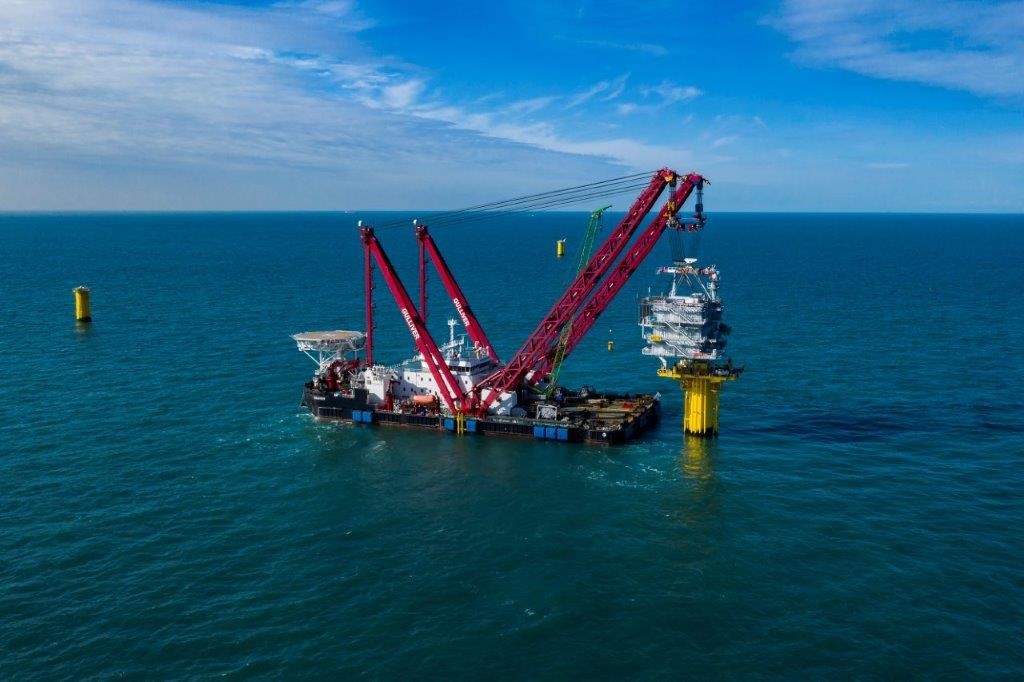
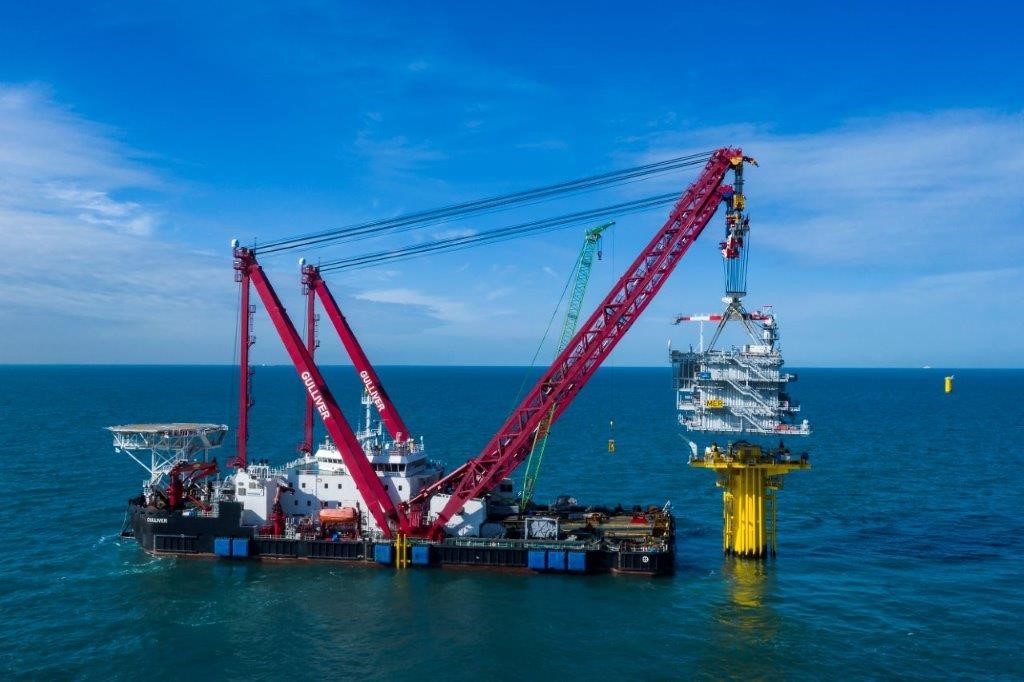
Pictures by Scaldis.
This article first appeared on Project Cargo Journal, a sister publication of SWZ|Maritime.


